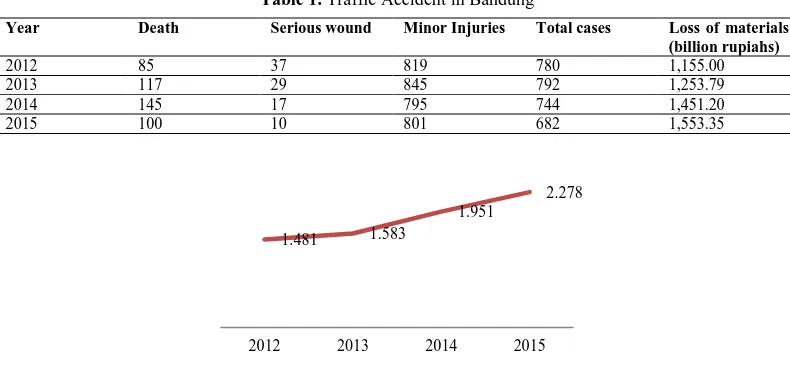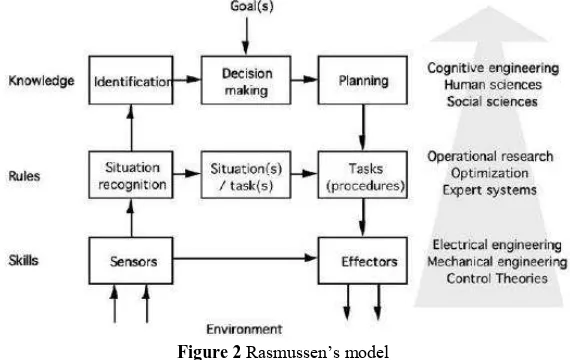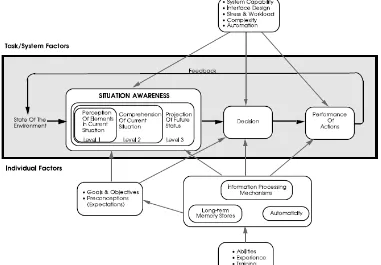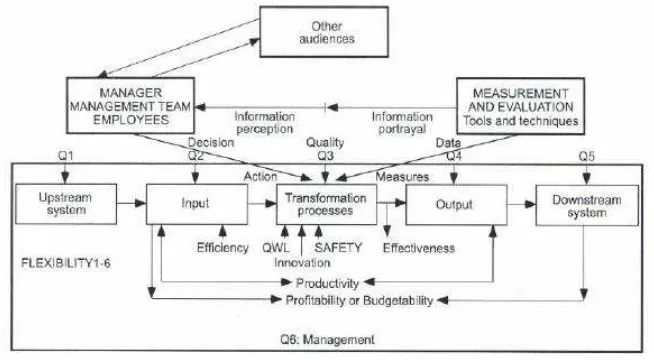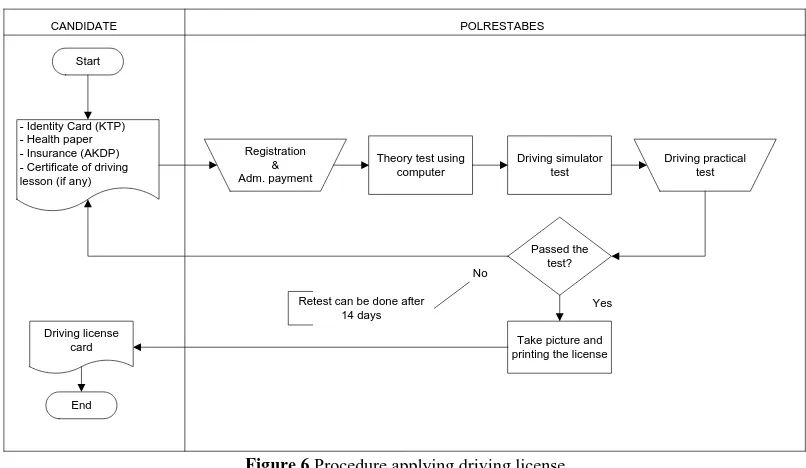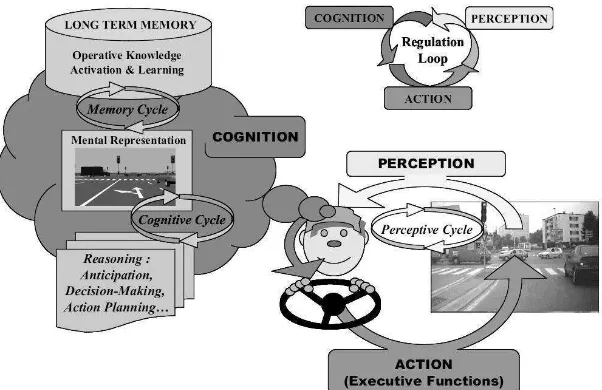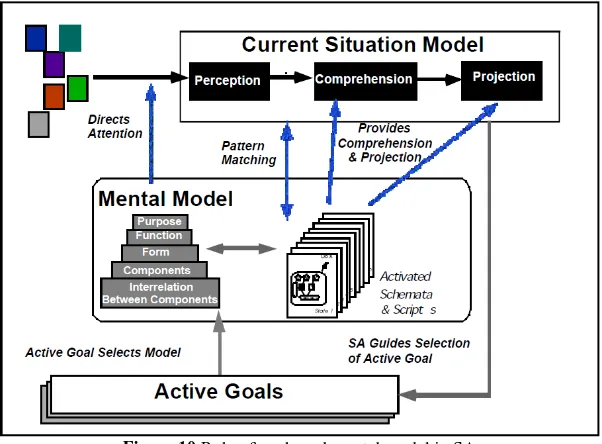4th SEANES International Conference on Human Factors and Ergonomics in South-East Asia 2016, Indonesia
Riding a Motorcycle Safety Issues in Term of
Socio-Technical and Human Machine Interaction Perspective
(Case Study: Road Traffic in Bandung)
Andrijanto
aand Alphared Gabariel PANGARIBUAN
aa
Universitas Kristen Maranatha
ABSTRACT
The exploratory research of riding a motorcycle is done to give a contribution to local government for solving a traffic problem considering the number of accident involving motorcyclist is increasing. The aim or this research is to give a guideline for further research relate to this topic. In this paper the issue of safety riding using motorcycle will be viewed as a socio-technical perspective and human machine interaction perspective, both perspectives can be used to analyze violations on the road which potentially causing accident. As a socio-technical issue, macro ergonomic approach is used to investigate Bandung Police Precinct (POLRESTABES). POLRESTABES is an organization which has an authority to issue driving license (system output) officially in Bandung area. A human machine interaction is used to analyze rider as a human whose may do an error on the road using the vehicle. Investigation on issuing driving license using macro ergonomic analysis and design (MEAD) found ineffective procedure mainly at upstream system. Investigation HMI using AUTOS pyramid as a frame work found that legacy expertise developed insufficient and incorrect mental model that may produce an incorrect decision during riding motorcycle. As a conclusion, both perspectives will be discussed to develop sustainable system regeneration (SSR) that may be used to enhance the quality of producing a competent rider.
KEYWORDS
Motorcycle; safety riding; macro ergonomics; human machine interaction; situational awareness.
INTRODUCTION
The number of motorcycle grows every year in Indonesia particularly in big city. Along with it the number of accident involving a rider also increases yearly then the traffic becomes a top issue should be considered by government. Bandung city as a capital of West Java Province also facing a same problem; data from Bandung Police Precinct (POLRESTABES Bandung) on table 1 shows the number of traffic accident in Bandung year 2012 – 2015. The ratio of loss material per case from drawing 1 shows increasing pattern, an action to response that condition must be considered. Indonesia State Intelligence Agency (BIN) declared negligence rider is the main cause of traffic accident. Generally accidents are preceded by violations.
Table 1. Traffic Accident in Bandung
Year Death Serious wound Minor Injuries Total cases Loss of materials (billion rupiahs)
2012 85 37 819 780 1,155.00
2013 117 29 845 792 1,253.79
2014 145 17 795 744 1,451.20
2015 100 10 801 682 1,553.35
Figure 1 Ratio of loss material per accident case
1.481 1.583
1.951
2.278
Andrijanto. et al. – Sociotechnical and Human Machine Interaction for Rider Quality breaks the rules can be caused by not understanding the rules or fail to keep the rules because of human factors. In Indonesia a qualified rider be guaranteed by driving license type C (SIM-C), it can be read on The Republic Indonesia Regulation of Traffic and Transportation No. 22, 2009, Clause 86, verse 1;
“The driving license has a function as a guarantee of competent driver”
It means rider must have a driving license to guarantee he/she understand to ride a motorcycle on the road safely and follows its regulations. In contrast with the above statement, data from Bandung POLRESTABES on table 2 shows violation against traffic sign and road mark has a highest contribution in total. Violate driving direction also can be added in the violation on traffic sign and road mark because traffic sign has already given the rider direction on the road clearly. Understanding traffic sign and road mark is a basic knowledge for driver and rider moving on the road using a vehicle. Violate the traffic sign and road mark deliberately can bring driver/rider to traffic incident which cause collision with other road user. Refer to the above regulation, it seems that violation on the traffic sign and road mark has a relation with the number of rider without document. (no documents data on table 2). From that view, it can be said easily the rider without driving license is not a competent rider and become a main suspect of traffic accident, but actually it is not a simple conclussion like showed in the table. No documents in the table 2 have 2 meanings, no driving license and or no vehicle paper. Previous interview with a police officers explained mostly cases of no document was rider has no driving license caught while riding a motorcycle. In the road inspection, police officer usually asks the rider to show the driving license and vehicle paper at the first time, then if the rider said ‘no driving license’ it has 2 meaning first actually rider dont have a driving licence and second rider forgot to bring it, but no distinction in the report, both cases is recorded as a riding without driving license. So in this case, violiation on traffic sign and road mark can not be judged automatically caused by rider has no documents as mentioned in the table. Further investigation is needed to find out the real incident and it will be involving a party that has the authority to issue driving licenses. In Indonesia, POLRESTABES has an authority to publish a driving license. For getting a driving license, a candidate must be assesed by following a sequential test at POLRESTABES office. Investigation will view POLRESTABES as an organization with a technology that can produce a competent driver/rider. In term of organization and technology, sociotechnical can be used to analyze that issue and Macro Ergonomic Analysis and Design (MEAD) method (Hendrick & Kleiner, 2002) is applied for scanning the organization. MEAD is chosen in this research by considering micro-ergonomic issues may be exist in the larger system’s environmental and organizational issues.
Andrijanto. et al. – Sociotechnical and Human Machine Interaction for Rider Quality
3
inspection often done by the police officers for checking the completeness of rider safety gear (helmet, gloves, etc) and vehicle equipments (left and right mirror, left and right sign lamp, etc). It seems that program was effective enhancing the rider’s awareness in passive safety. In other side that program seems not to be addressed
for correcting rider’s decision making process.Previous research in rider’s decision making has been done by a few of researcher. Budiastomo N. and Santoso G. A. (2007) said a rider’s decision to violate a traffic light can be influenced by risk perception. Muhaz M., 2013 said that aggresive riding behavior and emotional maturity can produce a wrong decision during riding a motorcycle. In this research rider’s cognition process in riding a motorcycle will be investigated by using human machine interaction perspective. AUTOS pyramid proposed by Guy A. Boy, 2011 will be used as a frame out of investigation. Situational awareness in dynamic decision making model by Endsley, 1995 will be used to analyze the rider’s mental model developed.
THEORY
Sociotechnical Systems and Macro Ergonomics
Sociotechnical systems (STS) concept emerged from Tavistock Institute related with several projects in the British coal mining industry. Trist and Bamforth, 1951 and their colleagues conducted that research. Based on Tavistock Institute studies, Emery and Trist, 1960 concluded that different organizational designs can utilize the same technology. Sociotechnical systems theory has 3-core constructs, joint causation (Pasmore, 1988; Davis, 1982), joint optimization (Taylor & Felton, 1993), and joint design (Davis, 1982).
Macroergonomics has its roots in sociotechnical system theory, it is a perspective, a methodology, and a recognized sub discipline of ergonomics/human factors (Hendrick & Kleiner, 2002). Investigation of the relationship among technological, personnel, organizational design, and environmental variables and their interactions can be done using macro ergonomics methodology.
Macroergonomic Analysis and Design (MEAD) methodology has been presented by Hendrick & Kleiner, 2002. MEAD consists of ten steps, are:
1. Scanning the environmental and organizational design subsystem 2. Defining production system type and setting performance expectation 3. Defining unit operations and work process
4. Identifying variance 5. Creating the variance matrix
6. Creating the key variance control table and role network 7. Performing function allocation and joint design
8. Understanding roles and responsibility perceptions 9. Designing/redesigning support subsystem and interfaces 10.Implementing, iterating, and improving.
Human Machine Interaction (HMI)
HMI has become an important field of research and engineering in the design and development nowadays system. In automation era most engineer designs machine with an user friendly interface, so the user can easily operates the machine or in other case user can not understand the interface because for controling the machine, user must understand several procedures displayed on interface. The machines in directly rely on the cognitive skill of their users for effectively using it in purpose. In many cases of HMI, Rasmussen’s model is used to explain the behavior of operator using machine in the complex dynamic system (Rasmussen, 1986).
Figure 2 Rasmussen’s model
Andrijanto. et al. – Sociotechnical and Human Machine Interaction for Rider Quality
4
complex system. Figure 2 shows Rasmussen’s model, humans need to identify a situation when there is no pattern matching (situation recognition) at the rule-based level, to decide according to specified (or sometimes unspecified) goals, and to plan a series of task. The control of cognitive systems requires strategic planning. (Rasmussen’s, 1986, cited by Boy, 2011).
HMI could be presented by describing human factors, machine factors and interaction factors. AUTOS pyramid is a framework that helps rationalize human centered design (HCD) and engineering it was introduced by Boy, 2011 to describe the relation between operator, machine, task and environment. Figure 3 shows the AUTOS pyramid, human factors are user factors (U), machine factors are artifact factors (A), and interaction factors combine task factors (T), organizational factors (O) and situational factors (S). The AUTOS is in the HCD domain. HCD is mandatory upstream process that enables a design team to incorporate human requirements into the design of a system. HCD is scenario-based and prototype-based and for developing a design, human factors issues from a suitable community of users is gathered. All possible scenarios that make users requirements are investigated. Human centered engineering (HCE) will continue to develop mock-ups for validating user requirements.
Figure 3 The AUTOS pyramid
Situational awareness (SA) is “knowing what is going on around you”, the model of situational awareness developed by Endsley (1995) in figure 4, explains that process of SA precede the decision process. Process of SA consists of 3 level, perception (level1), comprehension (level2), and projection (Level 3). Level 1 is an ability of operator to find important cues from environmental. Basic perception is needed to give a correct picture of the situation. Level 2 is an ability to integrate multiple pieces of information and a determination of relevance goal. Operator must be able to derive operationally relevant meaning and significance from level 1 data perceived. Level 3 is the ability to forecast future situation events and dynamics. SA process is supported by individual factors (information processing information and goals), and system factors (system capability, interface design, stress, workload, complexity, and automation).
Andrijanto. et al. – Sociotechnical and Human Machine Interaction for Rider Quality
5
METHODOLOGY
As mentioned in abstract, exploratory research is done to give a new perspective about the traffic accident issues in Bandung City area which motorcycle involved in it. This exploratory research does not intend to offer final and conclusive solution to the problem (Sekaran, U., and Bougie, R., 2013), the conclusion will be an open solution that can be used for further research. Data resources are obtained from secondary research that has been done in the previous (it is a research that related with this issue) and a qualitative data collected from population (in this case will be sample of motorcycle riders in Bandung City area).
A statistic descriptive is used to process a qualitative data which is obtained by questionnaire. The number of sample has been calculated using Paul Leedy proportion with 10% accuracy and 95% level of confidence. One hundred samples of rider are collected from Bandung area from major arterial roads in year 2012 randomly. The sample must be a rider with age above 15 years old. The questioner consists of 5 main statements and each statement contains a questions should be answered by rider. Five main statements are:
1. Rider background
2. Understanding vehicle (in this case rider’s own motorcycle) 3. Understanding traffic sign (35 basic traffic signs)
4. Concerning about safety 5. Concerning for other road users
The data is assumed to represents the population of rider in Bandung area. The result will be shown in discussion relates to the topic for analysing organization and behaviour of rider.
Macro Ergonomics
The research of macro ergonomic has been done by applying 9 steps of MEAD in Bandung POLRESTABES office directly in year 2012. Step no. 10 could not be done because no authority was given for doing it. As mentioned in abstract, this paper is presented as an exploratory research report; author will not describe the process of MEAD in detail because related to the purpose, this research will identify key issues and key variable of organization not for problem solving. It will be presented briefly by focussing on performance criteria diagram developed by Sink & Tuttle, 1989, adopted by Hendrick & Kleiner, 2002 in the second step of MEAD.
Figure 5 Performance criteria in work system
(QWL – Quality of Work Life, Q – Quality Checkpoint)
Human-Machine Interaction (HMI)
Andrijanto. et al. – Sociotechnical and Human Machine Interaction for Rider Quality
6
DISCUSSION
Socio-Technical Perspective
The procedure applying driving license for a new driver is starting from candidates coming to POLRESTABES, registering, and following three tests. Figure 5 shows the procedure flow chart, there are theory test, driving simulator test, and driving practical test that must be passed by candidates. Theory test assesses rider basic knowledge of driving, and then the rider ability applying the knowledge on the road is assessed by simulator. Finally a practical test is done to assess the rider driving skill. If rider passed the entire test, driving license will be issued. If rider failed, he/she can do a retest after 14 days.
CANDIDATE
Approaching the procedure with performance criteria of Sink and Tuttle, then the process on year 2012 can be analyzed backward as follows:
Downstream system
This checkpoint will investigate the customer satisfaction. In this case the customer satisfaction will be a negative behavior and attitude of rider on the road (Rider behavior on the road after obtaining a driving license). The negative behavior and attitude will be kept in the traffic vioalation record. Less violation record will describe a good quality of rider. Based on the interviewed with Bandung Department of Transportation (DISHUB), approximately 80% of total traffic violation year 2012 contributed by motorcycle. This is curios, if the capability of rider has been guaranteed by a driving license, why did the motorcycle can give 80% contribution in traffic accident? Investigation on 100 riders in Bandung year 2012 showed 86% rider has a driving license and 14% rider has no driving license existed on the road. It supposed the rider with a driving license gives less contribution in traffic accident but 80% of total traffic violation is to much if only contributed by 14% rider without driving license, then 86% riders with driving license also suspected giving a contribution in traffic violation. The output condition must be investigated, it will discuss in the next checkpoint.
As already described in introduction, detriment caused by accident increasing yearly, it showed by figure 1 about ratio of lost material per accident case. The detriment is increasing yearly, it means there were no significant improvement on the input for each producing time, the system received the same intake quality and produced the same quality of output as the previous condition. The situation occurred repeatedly in a year and the following years. Input is necessary getting a feedback from downstream to improve the quality of intake but in this situations, feedback seems not addresed to input.
Output
Andrijanto. et al. – Sociotechnical and Human Machine Interaction for Rider Quality
7
his/her competence. Both ways will be counted as an unofficially procedure and the proportion will be 66%. Sixty six percent of 86% a rider with a driving license has obtained an unofficial driving license. The function of driving license can not fully guarantee the competence of rider.
Figure 7 Legal, illegal, and shorcut procedure Figure 8 Understanding regulation no. 22 year 2009
Transformation
The process should transform candidates to be a competent rider. The three tests should measure the quality of candidates unless the candidates do not understand how to do the test properly. There are possibilities that candidate do not understand. The candidates knowledge is not enough to be tested and/or the test procedure is not clearly described. The content of test should be observed also, especially the simulator test and the practical test. Can the test method measure the quality of rider in properly? It is because mostly the candidates has failed in simulator test and practical test. There are a limitation in this reserach for doing a further research on this checkpoint. Only the procedure for doing the test that can be investigated, the guideline display for directing a candidates has been designed as a proposal of procedure improvement.
Input
Candidate entering the system without any consciousness about the meaning of driving license. The purpose of applying driving license is to legalize them using a motorcycle on the road. The knowledge to drive safely on the street is doubted. Investigation on 100 riders in Bandung area shows 57% of rider do not understand the regulation no. 22 year 2009 (figure 8). It means no preparation has been done by candidate to attend the test.
Upstream system
In registration process, rider has to submit several documents, focus on the certificate of driving lesson (if any), there are no certificate of driving lesson for candidate applying SIM-C (driving license for riding motorcycle). In Indoneseia there are no institution or society can provide that certificate officially, it means no official lesson can be learnt by candidate to prepare him self for attanding the test. Q1 emphasizes the quality of suppliers, there are no institution exist in upstream system to prepare the candidate as a system raw material, then the quality of candidate in this checkpoint is unguaranteed.
Human Machine Interaction Perspective
Figure 9 Car driving activity as a “Perception-Cognition-Action” dynamic regulation loop
Interaction of Rider (U) and Task (T) (U-T)
Andrijanto. et al. – Sociotechnical and Human Machine Interaction for Rider Quality
8
shows the loop of car driver mental activity. That loop had been described in Cognition Simulation Model of the Drivers (COSMODRIVE) by Bellet et al, 2009, adopted by Boy, 2011. That model will be used to describe rider activity using a motorcycle. First, Input is generated by perception of road environment (perceptive cycle). Each input has a target or goals, for instance turn left/right or go straight at a crossroad will be a goal of some activities done by the rider. Perceptive cycle will produce mental representation then the mental representation of road environment will activate memory cycle and cognitive cycle. In cognition loop, mental representation and goal are seeking the knowledge relate with the situation, it can be an experience facing the same situation in the past, traffic rule, etc. The information which is provided by LTM will be attached on input and generates a decision and action planning to the present situation. The output will be an action implemented into the road by rider (can be stored at LTM and activated for the future).
Figure 10 Role of goals and mental model in SA
Refers to Endsley situational awareness model on figure 4, the activity of obtaining information from environmental consists of 3 levels : perception, comprehension, and projection. That 3 activities is directed by active goals, then the pattern matching process will search mental model in LTM (level 1) to find the best schemas which relates with the goal and actual information, comprehend it (level 2) to derive operationally relevant meaning and significance from perception, and then predicted (level 3) the near future situation that may come up for the selected schemas. The result of activated schemas will be recorded in LTM as a new schema or updated schema and can be retrieved in the future use. The relation of mental model, active goals, and SA can be seen in figure 10 (Endsley, 2000).
The role of mental models
Mental model is a small scale subjective representation of system’s structure and functioning (Canas, B. Velichkovsky, and M. Velichkovsky, 2013). Mogford, 1997 states that a mental model is the underlying knowledge that is the basis for situational awareness (SA). The rider knowledge is a knowledge that can be used to produce activity. That knowledge can be represented by using driving schemas (Mathern, Bellet, Mille, Dans, 2010). In this case the mental model can be approached by driving schemas. Endsley said the use of mental models in achieving SA is considered to be dependent on the ability of the individual to pattern match between critical cues in the environmental and elements in the mental model. It can be said that the good mental model is producing a good schemas for supporting decision making. In the interaction of rider with motorcycle doing task (deployed to a few goals), mental model provides the following mechanism on the rider :
1. Guiding rider attention to the relevan aspects of the road situation, rider able to collect the critical cues from environmental based on s/he knowledge, generated by active goals.
2. Understanding road situation, rider able to comprehend the critical cues from road to select the best related activites
3. Predicting the near future situation of the road, rider able to depict the next goals should be set after the decision is executed.
That is the expected competence of rider to achieve safety riding. A good mental model is needed to be developed for building that competency in the rider behavior. For that a sufficient knowledge and training is expected can be obtained by rider in the beginning experience of s/he riding a motorcycle.
Human Factors (The U of AUTOS)
Andrijanto. et al. – Sociotechnical and Human Machine Interaction for Rider Quality
9
can produce a traffic violation. Violation is one of errors that humans make and catagorized as any behaviour that deviates from accepted procedures, standard, and rules. Violation can be either deliberate or unintentional (Reason, 1997). Rasmussen model from figure 2 can be used to describe the behavior of rider falls between skill level and rule-based level, which rider has a problem in situation recognition.
Discussion will focus on the violation which cause the second detriment. Deliberate violation and unintentional violation may happen because riders are unaware of situation or the rule is not clearly expressed (Boy G. A., 2011 contributed by Johnson). Unaware situation of rider is caused by poor situational awareness, which is generated by mental of users. Jones and Endsley, 1996 found that approximately 7% of situation awareness (SA) errors could be traced to a poor or insufficient mental model. They also found that 6.5% of SA errors involved the use of the incorrect mental model to process information, thus arriving at an incorrect understanding of the situation (Endsley, 2000).
Failure mode of mental model mechanism
The failure mode of mental model mechanism will be analyzed to find out the posibility of rider does violation because of poor SA. This failure mode is assumed happens after goals has been stated, then the mechanism provided by mental model is activated. Table 3 shows the normal state of mechanism, failure mode will occure if there are components of mechanism do not working properly because of insufficient or wrong input/output.
Table 3. Mechanism of rider mental model – normal state
Level SA Ability Input Mental model Output LTM
1 Perception Guiding attention to relevant aspects of
road situations
The possibility condition of mental model mechanism can not work properly will be described as follows : Level 1 Perception : Rider can not find a critical cues then mental model provide a default schemas.
Rider selected a wrong cues then mental model provide a wrong schemas.
Rider found cues but mental model can not find a proper schemas from LTM then default schemas is provided
Mental model provide wrong default schemas instead of the absence of proper schemas.
Mental model provide a wrong situation to be created as a proper schemas in LTM Level 2 Comprehension : Level 1 provided a wrong schemas and script then mental model unable to recognize
the situation and selected wrong activities
Level 1 provided a proper schemas and script but not enough time for mental model to comprehend it.
Level 3 Projection : Level 2 provided a wrong situational recognized and wrong selected activities then mental model unable to assess risk and forecast next goals, wrong decision is made. Level 2 provided a proper situational recognized and selected activities but mental model unable to assess risk and forecast next goals then wrong decision is made.
The failure mode of mechanism may occur if the above combination of condition happened. The failure mode indicates the weak of mental model that may produce the wrong decisions. The weak mental model have characters :
- Critical cues can not be obtained because the rider does not know which cues must be collected - The schemas is developed repetedely by wrong situation and decision
- The pattern matching proceess can not find the proper schemas
- The knowledge is not enough to built a good default schemas for replacing the absence schemas. - The knowledge is not enough to assess the risk
- The knowledge is not enough to forecast the next goals
Andrijanto. et al. – Sociotechnical and Human Machine Interaction for Rider Quality
10
friends (47%), parents (31%), or relatives (22%), it can be seen on figure 11. In this case, the expertise derived to a rider is a legacy application that continues to be used even though they show no evidence of even the most basic human factors involved in practice (no evidence that a basic knowledge from an official institution derived to the rider at the first time). They were not an expertise that had an ability to deliver a good lesson of riding. Knowledge about traffic and riding safely has been obtained from parents, media, police, and other resources (figure 12). The known trusted resource was only the police, but it was only 5% and mostly they were learning from media (37%). The legacy expertise that has been derived to the rider will create wrong schemas and stored in LTM. Development weak mental model will produce the poor SA. The candidate may be misinterpreting the cues and situation from road environmental then the safety riding condition can not be achieved.
Figure 11 Legacy application derives from Figure 12 Knowledge resources
Interaction of Rider (U) and Motorcycle (A) (U-A)
First time interaction in riding motorcycle is to know about the motorcycle and then try to ride it. It will be a basic for a rider building his/her competency character. Artefact (A) of AUTOS can be viewed from the motorcycle technology recently; author will not discuss the development of motorcycle technology. The discussion is more about the interaction between rider and the vehicle. Recent development has already improved the automatic transmission on motorcycle. A number of automatic motorcycles are increasing. In year 2012 found that 32% of riders are using an automatic transmission. Easy to operate and easy to use, simple interface and high performance are the characters of an ideal motorcycle in Indonesia. Mostly the motorcycle manufacturers using an image of international motorbike racer in their advertisement then the high performance character is expected to be included in the product. Actually they are selling a motorcycle for transporting people, not for racing.
Figure 13 First time learnt to ride a motorcycle Figure 14 Owning a driving license at first time learnt
The racing motorcycle and commercial motorcycle have a lot of distinctions in the technical specification. The image of high performance of racing motorcycle drives the rider to modify their standard vehicle to be faster. Then the built character that embedded in rider is a racer. Driving as fast as they can is one of aggressive behaviour of rider generally found in the road. Aggressive driving is condition that the rider has immature emotion and cannot wait the right time to do some reasonable action (Hurlock, 1996). Usually rider has a problem to follow the rule and impatient in queue. Hurlock also said that aggressive riding will be decreased by increasing of age and experience.
The age of person learns to ride a motorcycle has been moved to a younger people and mostly below the age limit. The limit age for applying SIM-C in Indonesia is above 16 years old. Figure 13 shows that there are 5% of riders started to learn to ride motorcycle at under 8 years old. In the past, 8 years old was time when children were having fun with playing a bicycle. Today it is easy to find an elementary school student riding a motorcycle with their 2 or 3 friends behind them, is they had a driving license? Certainly not, applying driving license needs an identity card. Figure 14 show that 80% of rider did not have a driving license at the first time. The interaction of U and A in Bandung motorcycle case has been starting from 8 years old children.
Andrijanto. et al. – Sociotechnical and Human Machine Interaction for Rider Quality
11
CONCLUSSION
Both perspectives have already discussed. Performance criteria by Sink & Tuttle model is adopted, to draw both perspectives, figure 15 show the model of actual condition of rider quality development in Bandung area. The main problem of organization has been identified by MEAD, it is the upstream system. There are none of official institution at upstream system can act as a supplier to provide a good intake into the system input Q1. It caused the quality of input Q2 cannot be improved for producing a competent rider whose can contribute a safety riding condition. Relate with it, AUTOS has identified the mental model of rider has been developed improperly, rider learnt to ride a motorcycle from legacy application derived from their environment even though there are no evidence of basic human factors involvement in it. Weak mental model will provide a wrong decision that can contribute a number of traffic violation.
The upstream system becomes an important part in designing a competent rider. The aim of upstream system is to build an official application and then replacing the legacy application. Sustainable system regeneration SSR must be developed to correct the existing public order in Bandung area; figure 16 shows the SSR model. Creating one generation of competent rider will not enough to replace the legacy application (LA) but creating a generation of competent rider continuously can fix the existing public order slowly but effective. SSR model will produce a competence rider that guarantee the safety issue in Bandung road traffic is under controlled then the traffic accident involving rider can be reduced.
Andrijanto. et al. – Sociotechnical and Human Machine Interaction for Rider Quality
12
Regeneration means to educated one generation to renew the previous generation. There are two loops in model, left loop is a continuous regeneration for creating new generation and right loop is for amplifying official application (OA) using competent rider. Official application will be embedded in mental model instead of legacy application at public community, and then official application will be a new legacy application for the next generation. Both loops will work together to keep safety riding will be held in Bandung area.
The driving license is an official document that guarantee a competent rider, a competent rider will keep riding safely on the road and follows the rule. So the socio-technical perspective is needed to approach the organizational issues as an institution that has the authority to issue driving license, and then control the system for keeping drive a continuous regeneration in producing a competent rider. Human machine interaction perspective is needed to design a competent rider as mentioned in The Republic Indonesia Regulation of Traffic and Transportation No. 22, 2009, and then maintain its evolution. Both perspectives working as a synergy to improve the quality of rider from age to age in Bandung area. Safety riding condition can be achieved along with increased quality of rider.
ACKNOWLEDGMENTS
We would like to thank to The Mayor of The City of Bandung that gave us a permission to do a study in the POLRESTABES Bandung. Thanks to all staff of POLRESTABES Bandung for cooperating in this research. Thanks to DISHUB Bandung for sharing information about traffic in Bandung city.
This research has been starting since 2012 by me and one of my students and still working now. Most of material of this paper has been written in my student thesis and also has been reported to The Mayor of The City of Bandung office.
REFERENCES
Bellet, T., Mayenobe, P., Bornard, J. C. (2009), How to Investigate The Living Cognition: an Application to Dynamic Simulation of Mental Activities while Driving. Safety Science, 47, 1205-1221.
Bellet, T. (2011), Analysis, Modelling, and Simulation of Human Operator’s Mental Activities. Edited by Boy.,
A. G., England: Ashgate Publishing Limited
Bellet, T., Mayenobe, P., Bornard, J. C., Paris, J. C., Gruyer, D., Claverie, B. (2011), Human Driver Modelling and Simulation into a Virtual Road Environment. Human Modelling in Assisted Transportation: Model, Tools, and Risk Methods. Milan, Springer, 251-262.
Boy, A. G. (2011), The Handbook of Human-Machine Interaction. A Human-Centered Design Approach, England: Ashgate Publishing Limited.
Budiastomo, N., Santoso, G. A. (2007), Hubungan Persepsi Resiko Kecelakaan dan Pengambilan Keputusan Melanggar Lampu Merah. JPS, 13, 1, 55-68
Endsley, M. R. (2000), Theoretical Underpinning of Situation Awareness: A Critical Review, Situational Awareness Analysis and Measurement. Mahwah, NJ: Lawrence Erlbaum Associates.
Endsley, M. R. (1995), Toward a Theory of Situation Awareness in Dynamic System, Human Factor and Ergonomic Society, 37, 1, 32-63
ETSC (European Transportation Safety Council) (1997), Safety Monitor, www.etsc.eu
Flin, R., O’Connor, P., Crichton, M. (2008), Safety at The Sharp End. A Guide to Non-Technical Skills, England: Ashgate Publishing Limited.
Hendric, W., & Kleiner, B. M. (2002), Macroergonomics. Theory, Methods, and Applications, New Jersey: Lawrence Erlbaum Associates.
Hurlock (1996), Psikologi perkembangan. Suatu pendekatan rentang kehidupan edisi kelima , Jakarta: Gelora Aksara Pratama.
Jones, D. G., Endsley, M. R. (1996) Sources of Situation Awareness Error in Aviation, Aviation, Space, and Environmental Medicine, 67, 6, 507-512
Kleiner, B. M. (1999), Macroergonomic Analysis and Design for Improved Safety and Quality Performance. International Journal of Occupational Safety and Ergonomics, 5, 2, 217-245.
Kleiner, B. M. (2006), Macroergonomics: Analysis and Design of Work Systems. Applied Ergonomics, 37, 81-89.
Mogford, R. H. (1997), Mental Models and Situational Awareness in Air Traffic Control, International Journal of Aviation Psychology, 7, 4, 331-342
Andrijanto. et al. – Sociotechnical and Human Machine Interaction for Rider Quality
13
Rasmussen, J. (1986), Information Processing and Human-Machine Interaction: An Approach to Cognitive Engineering, In A. P. Sage (Ed.), System Science and Engineering, North Holand Series.
Reason, J. (1990), Human Error, New York, Cambridge University Press
Reason, J., Manstead, A., Stradling, S., Baxter, J., Campbell, K., (1990), Error and Violations on The Roads: a real distinction?, Ergonomics, 33, 1315-1332
Sekaran, U., Bougie, R. (2013), Research Methods for Business sixth Edition, United Kingdom: John Wiley and Sons Ltd.
Trist, E. L. (1981), The Evolution of Socio-Technical System, A Conceptual Framework and An Action Research Program, Occasional Paper, 2
